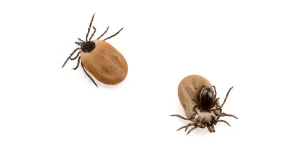The diminutive bloodsuckers, commonly referred to as bed bugs, pose a significant concern for both residential dwellings and commercial establishments. Despite advancements in pest control, these resilient pests remain challenging to eradicate and frequently necessitate potent interventions. Heat treatment has emerged as a practical solution, gaining popularity due to its efficacy. This article delves into the economic impact of bed bugs and explores how heat treatments effectively combat their presence.
Want pest control services that won’t break the bank? Look no further! Based in Vista, California, we offer affordable solutions for both residential and commercial properties. Get in touch with Vista Pest Control to learn more.
The Economic Impact of Bed Bug Infestations
Bed bug infestations can take a heavy toll on finances. For households, this burden may include:
1. Professional Extermination Services: Conventional treatments often demand multiple sessions, driving up expenses.
2. Replacement of Infested Items: Furniture, mattresses, and personal possessions might require disposal.
3. Temporary Relocation: Families may need alternative accommodations during treatment, incurring additional costs.
4. Medical Costs: Allergic reactions and secondary infections from bites may necessitate medical care.
Businesses encounter even more significant obstacles:
1. Revenue Loss: Hotels, apartments, and similar establishments may need more patronage and legal liabilities.
2. Reputation Damage: Infestations can lead to negative feedback and harm brand image.
3. Operational Disruptions: Offices, retail establishments, and other enterprises may experience temporary closures, which can impact productivity and profits.
Why Do Bed Bugs Persist After Heat Treatment?
It’s frustrating that despite heat treatment, some bed bugs can still survive. Here’s why they might endure:
1. Inadequate Heat Distribution: If the heat doesn’t reach every corner at the required temperature, some bed bugs might survive.
2. Poor Preparation: Items like thick mattresses or heavy blankets can act as insulators, shielding bed bugs from lethal temperatures.
3. Reinfestation: Bed bugs may return to treated areas from nearby units or through visitors, initiating new infestations.
How Does Heat Treatment Work?
One way to eradicate is with heat treatment bed bugs by elevating the temperature of the infested area to levels lethal for these pests. Here’s an overview of the process:
1. Preparation: The area undergoes preparation, involving the removal of heat-sensitive items and ensuring adequate airflow.
2. Heat Application: Industrial heaters raise the space’s temperature to approximately 120-135°F (49-57°C).
3. Monitoring: Technicians utilize sensors and monitors to verify the even distribution of heat and sustain the elevated temperature for several hours.
4. Cooling: Following the required duration, the area is gradually cooled down to prevent damage to belongings and ensure safety.
What Is the Price of Bed Bug Heat Treatment?
The price of heat treatment can fluctuate depending on various elements, including the area’s size, the infestation’s intensity, and the geographical location.
Typically, homeowners can expect to allocate between $1,000 and $3,000 for a thorough heat treatment. For businesses, particularly those with expansive premises or multiple units, the expenses can be notably higher. Nevertheless, it’s crucial to view this expenditure as an investment in eliminating bed bugs and averting potential future costs linked to persistent infestations.
How Does Thermal Processing in Pest Control Eliminate Bed Bugs?
Employing heat therapy for bed bug eradication proves highly effective due to these pests’ susceptibility to elevated temperatures. Here’s a detailed breakdown of how pest control experts utilize heat treatment to eradicate bed bugs:
1. Precision Heating: Specialized apparatuses generate and disperse heat throughout the infested area, penetrating even the most minor cracks and crevices where bed bugs typically hide.
2. Lethal Threshold: Bed bugs and their eggs perish at temperatures exceeding 113°F (45°C) within 90 minutes. Heat treatment typically elevates temperatures to 120-135°F to ensure comprehensive extermination.
3. Prolonged Exposure: Sustaining the infested area at the target temperature for several hours guarantees the elimination of bed bugs across all life stages, from eggs to mature adults.
4. Continuous Monitoring and Adjustment: Technicians diligently supervise temperature levels, making necessary adjustments to equipment to uphold consistent heat distribution, thus leaving no refuge for surviving bed bugs.
Conclusion
Bed bug infestations can impose substantial financial burdens on both residential and commercial properties. Expenses may encompass treatment fees, the replacement of infested items, revenue loss, and reputational harm. Heat treatments emerge as a potent solution due to their ability to exterminate these pests using high temperatures.
Nonetheless, the efficacy of heat treatment hinges on meticulous execution. Adequate preparation, consistent heating, and professional assistance are imperative. Despite the initial expense, the enduring advantages, such as peace of mind, safeguarding personal belongings, and preventing future infestations, justify the investment.
Heat treatment stands out as an excellent strategy against bed bugs, eschewing chemical usage and ensuring thoroughness. By embracing and implementing such effective methodologies, we can mitigate the financial and emotional strain caused by bed bug infestations, fostering healthier and happier living and work environments.





